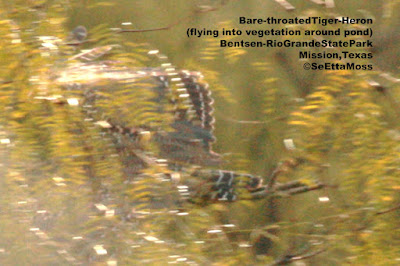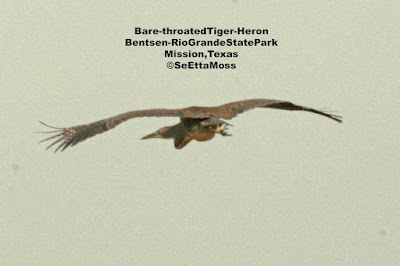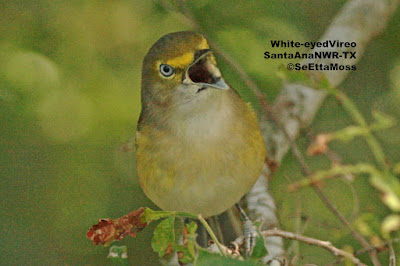Another Bare-throated Tiger-Heron photo

This really pretty cool pic of the BARE-THROATED TIGER-HERON was buried just to left of the middle of the uncropped pic below. Look carefully--it is flying to the left into the thick vegetation that surrounds the pond on the south side of the canal and the top of it's wing is far to the left of (and in line with) the 2nd line of text. The banding on it's tail is visible in the center bottom of the pic and it's legs show directly to the right of the tail. This shows the beautiful what-looks-like-fringing on the trailing edge of the wings (could this what is called the "vermiculated" wing plumage???). The dark object across the bottom part of the pic is spotting scope belonging to another birder--one of the pitfalls when quickly photographing flying birds when there are other birders around. It may help to double-click on each of these pics to enlarge them for more detail. SeEtta






